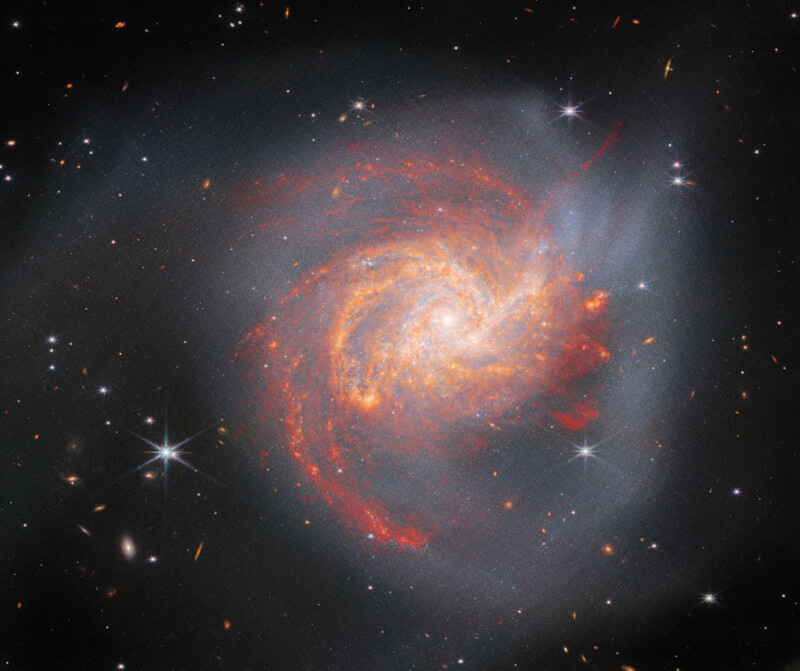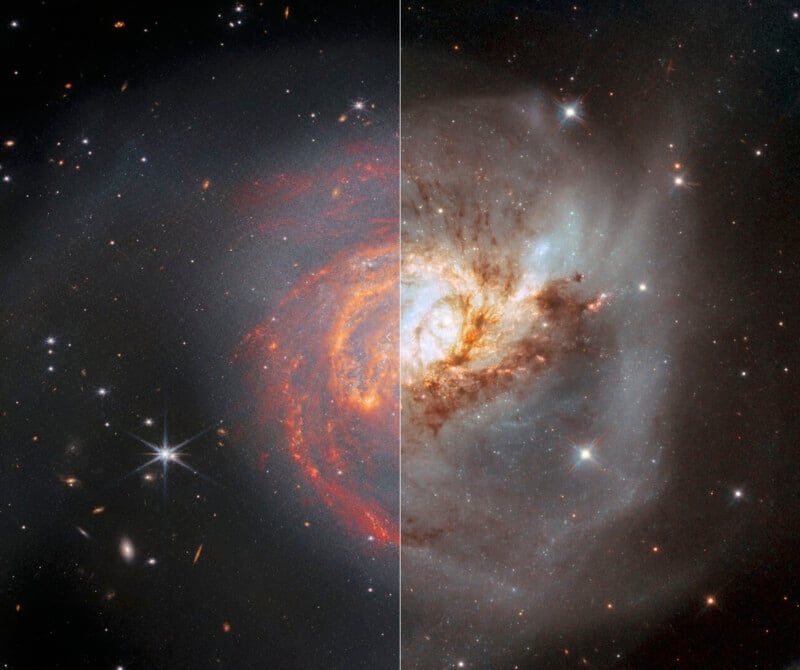Webb Captures a Colorful Cosmic Clash of the Titans

While people in Canada and the United States recently celebrated national holidays with fireworks, the James Webb Space Telescope observed a violent cosmic explosion more than 120 million light-years from Earth.
The new image is dominated by “peculiar galaxy” NGC 3256. The Milky Way-sized galaxy is in the constellation Vela and is part of the Hydra-Centaurus Supercluster.
“NGC 3256 may seem peaceful, a swirl of tightly entwined spiral arms set in a hazy cloud of light, but this image shows the aftermath of an ancient cosmic clash,” writes the European Space Agency (ESA) on the ESA Webb website.
The “cosmic clash” occurred around 500 million years ago and was a head-on collision between similar spiral galaxies. The vibrant red and orange regions that spread across the galaxy contain many young stars created during the galactical merger.
While collisions at a galactic scale may seem like they would be bombastic, they are not particularly vicious. However, that does not take away from the spectacular consequences of these collisions.
While there is so much space between stars in galaxies that they are exceedingly unlikely to collide, the gas and dust contained within galaxies interact during a merger. In the case of NGC 3256, its collision triggered a powerful burst of star formation, as seen in the brightest parts of Webb’s new image.
Despite it being practically impossible for stars to collide, that does not mean that galactic mergers do not affect existing stars. The gravitational forces contained within galaxies can rearrange stars and create tidal tails. Scientists use these tidal tails to study stellar populations, star formations, and galactic mergers. Galaxies such as NGC 3256 also offer a case study for learning about how galactic mergers affect galactic growth and the mass of supermassive black holes at the center of many galaxies.
The infant stars shine brightest in infrared wavelengths, which makes the galaxy a perfect target for Webb, as the space telescope’s Near-Infrared Camera (NIRCam) and Mid-Infrared Red (MIRI) instruments deliver incredible detail at these wavelengths.

Compared with prior observations performed by the Hubble Space Telescope, which is no slouch, Webb resolves significantly better across infrared wavelengths, revealing details that Hubble cannot see. However, Hubble’s visible-light imaging via its Wide Field Camera 3 and Advanced Camera for Surveys has benefits too. Webb and Hubble work together to provide scientists with incredible data.